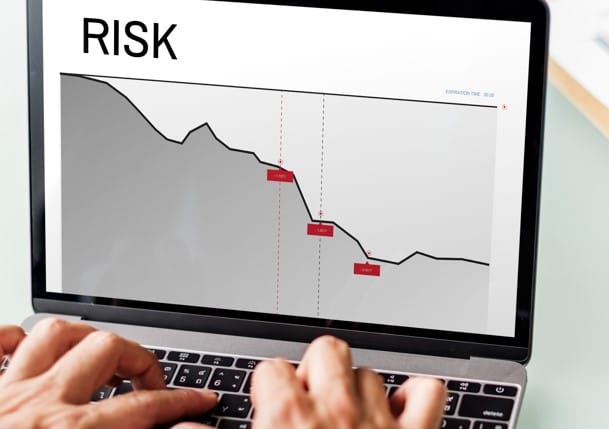Strengths of Technical Analysis
Simplicity and Accessibility in Technical Analysis:

- Ease of Understanding: One of the primary reasons for the popularity of technical analysis is its simplicity. Unlike fundamental analysis, which requires a deep understanding of financial statements, economic indicators, and industry trends, technical analysis relies on visual representations of price data and straightforward mathematical calculations. This makes it accessible to a wide range of traders, including beginners who may not have extensive financial knowledge.
- No Need for Specialized Education: Technical analysis doesn’t demand formal education or advanced degrees in finance or economics. Traders can learn the basics of technical analysis relatively quickly through books, online resources, courses, and practice. This low entry barrier means that anyone with an interest in trading can potentially use technical analysis to inform their decisions.
- User-Friendly Tools: There is a plethora of user-friendly software and charting platforms available that provide access to a wide range of technical indicators and tools. These platforms often come with built-in features that make it easy for traders to overlay indicators on price charts, conduct technical analysis, and make informed trading decisions.
Objective Signals in Technical Analysis:
Technical analysis provides traders with objective signals based on historical price and volume data. These objective signals are essential because they offer clear and quantifiable criteria for making trading decisions, reducing subjectivity and emotional bias. Here’s a deeper look at how technical analysis generates objective signals:
- Mathematical Formulas: Many technical indicators and patterns are based on mathematical formulas and calculations. These formulas take historical price and volume data as input and generate specific numerical values as output. Traders can use these values to determine buy, sell, or hold signals. For example, the Moving Average Convergence Divergence (MACD) indicator uses the difference between two moving averages, creating a numerical value that can serve as a signal.
- Clear Rules: Technical analysis provides traders with clear and predefined rules for interpreting signals. These rules are often straightforward and easy to understand. For instance, a common rule with moving averages is that when a short-term moving average crosses above a long-term moving average, it generates a buy signal, and when it crosses below, it generates a sell signal.
- Visual Representation: Price charts, which are a fundamental aspect of technical analysis, offer a visual representation of price movements. Traders can see patterns, trends, and potential support and resistance levels directly on the chart. Visual cues make it easier to identify potential trading opportunities and execute trades.
Focus on Timing in Technical Analysis:
One of the key strengths of technical analysis is its ability to assist traders in making precise timing decisions when entering and exiting positions. This focus on timing is crucial for traders seeking to maximize profits and minimize losses. Here’s a deeper look at how technical analysis achieves this:
- Identification of Entry Points: Technical analysis provides traders with tools and indicators that help identify optimal entry points for trades. Traders can look for specific signals or conditions, such as a breakout from a chart pattern, a moving average crossover, or a stochastic oscillator signal, to pinpoint when to enter a trade.
- Confirmation of Trends: Technical analysis excels at confirming the presence of trends in asset prices. By identifying trends early, traders can enter positions in the direction of the trend to capture potential gains. Trend-following indicators, like the Moving Average, Average Directional Index (ADX), and Parabolic SAR, help traders confirm and ride trends effectively.
- Timing Exits: Technical analysis not only assists in entering trades but also in timing exits. Traders can use various technical tools to determine when a trend may be losing strength or reversing. This allows them to exit positions before significant losses occur or take profits when conditions favor a trend reversal.
Useful in Trending Markets in Technical Analysis:
One of the notable strengths of technical analysis is its effectiveness in identifying and trading in trending markets. A trending market is one in which the price of an asset moves consistently and persistently in one direction (either up or down) over an extended period. Here’s a closer look at how technical analysis is particularly useful in such market conditions:
- Trend Confirmation: Technical analysis is adept at confirming the existence of trends in asset prices. Traders can use various technical indicators and tools to validate whether an asset is in an uptrend (rising prices), a downtrend (falling prices), or a sideways trend (range-bound or consolidating).
- Trend Following: Many technical traders adopt trend-following strategies, where they aim to capitalize on the continuation of an established trend. Technical indicators like moving averages, trendlines, and trend channels help traders identify and stay aligned with the dominant market direction.
- Capture Profits in Trends: Trading with the trend allows traders to capture profits as prices move in the desired direction. This approach involves buying in uptrends and selling (or shorting) in downtrends. Traders often use pullbacks or retracements within a trend as opportunities to enter or add to positions.
Risk Management in Technical Analysis:
Effective risk management is a critical component of successful trading, and technical analysis plays a significant role in helping traders manage risk. Here’s an in-depth look at how technical analysis contributes to risk management in modern trading:
- Setting Stop-Loss Orders: Technical analysis aids traders in determining appropriate stop-loss levels. A stop-loss order is a predefined price at which a trader exits a trade to limit potential losses. Traders can use technical indicators and support/resistance levels identified through technical analysis to place stop-loss orders at strategic points. For example, in a long position, a trader might set a stop-loss just below a key support level.
- Identifying Support and Resistance: Technical analysis is instrumental in identifying support and resistance levels. Support is a price level at which an asset has historically found buying interest and reversed its decline, while resistance is a level at which selling interest has historically caused price reversals. Traders can use these levels to determine where to place stop-loss orders and set profit targets.
- Risk-Reward Ratio: Technical analysis enables traders to calculate and assess the risk-reward ratio for each trade. This ratio compares the potential profit to the potential loss in a trade. By using technical indicators and chart patterns to identify entry and exit points, traders can determine if a trade offers a favorable risk-reward ratio before entering it.
Weaknesses of Technical Analysis
Limited Information in Technical Analysis:
- Exclusion of Fundamental Factors: Perhaps the most significant limitation of technical analysis is its exclusive focus on historical price and volume data, while disregarding fundamental factors. Fundamental factors encompass a wide range of information, including a company’s financial health, economic indicators, geopolitical events, news, and market sentiment. These factors can have a profound impact on asset prices but are not considered in technical analysis.
- Oversimplification: Critics argue that technical analysis oversimplifies the complexity of financial markets by reducing all relevant information to price and volume data. In reality, market participants consider a vast array of factors when making trading decisions, and many of these factors are not reflected in historical price charts.
- Inadequate for Long-Term Investing: For long-term investors with a focus on asset fundamentals and economic trends, technical analysis may provide insufficient information. Fundamental analysis, which evaluates a company’s financials, industry trends, and economic conditions, is often more relevant for making long-term investment decisions.
Subjectivity in Technical Analysis:

- Interpretation Variability: A significant challenge with technical analysis is the subjective interpretation of chart patterns and indicators. Different traders may interpret the same chart or indicator differently, leading to varying trading decisions. This subjectivity can introduce a level of uncertainty and inconsistency into technical analysis.
- Pattern Recognition: Chart patterns, such as head and shoulders, double tops, or flags, are integral to technical analysis. However, identifying these patterns can be subjective, as there may be variations and nuances that traders interpret differently. What one trader perceives as a valid pattern, another may dismiss as noise.
- Indicator Parameters: Many technical indicators, like moving averages or oscillators, require users to set parameters such as the time period for calculation. The choice of these parameters can significantly impact the signals generated. Different traders may select different parameter values, leading to disparate results.
- Confirmation Bias: Traders who rely heavily on technical analysis may fall victim to confirmation bias, a cognitive bias where they seek out or give more weight to information that supports their existing beliefs or trading positions. This bias can lead traders to ignore contradictory evidence or dismiss signals that go against their expectations.
False Signals in Technical Analysis:
- Definition of False Signals: False signals in technical analysis refer to situations where a trading indicator or pattern suggests a particular market move, but the actual price movement does not align with that suggestion. In other words, it’s when the analysis provides a signal that turns out to be incorrect or misleading.
- Common Occurrence: False signals are a common occurrence in technical analysis, and traders often encounter them in their trading activities. These signals can manifest in various forms:
- Fake Breakouts: False signals may occur when a price appears to break out of a chart pattern, such as a triangle or a rectangle, only to reverse and move back into the pattern shortly after. Traders who entered positions based on the breakout may experience losses.
- Whipsaws: A whipsaw is a situation where a trading signal, such as a moving average crossover, provides a buy signal followed shortly by a sell signal, or vice versa. This results in multiple, often unprofitable, trades in a short period.
- Divergence Reversals: Sometimes, technical indicators like the Relative Strength Index (RSI) or the Moving Average Convergence Divergence (MACD) show divergence from price movements, suggesting a reversal is imminent. However, the divergence may not lead to the expected reversal, resulting in false signals.
Ineffectiveness in Challenging Market Conditions in Technical Analysis:
Technical analysis, while valuable in many situations, may prove ineffective or less reliable in challenging or unfavorable market conditions. These conditions can include:
- Sideways or Range-Bound Markets: In a sideways or range-bound market, asset prices move within a relatively narrow trading range, with no clear trend in either direction. Technical analysis relies heavily on identifying trends, so it may produce conflicting or misleading signals in such conditions.
- False Breakouts: Range-bound markets can lead to false breakout signals as prices briefly move above or below the established range but then revert to trading within the range. Traders relying on breakout strategies may experience losses due to these false signals.
- Whipsawing: In a ranging market, prices may frequently change direction, resulting in multiple whipsaw signals. Traders who enter positions based on these signals may incur losses as the market quickly reverses.
- Low Liquidity: Assets with low trading volumes and liquidity can be challenging for technical analysis. Low liquidity can lead to erratic price movements and gaps on charts, making it difficult to rely on technical indicators and patterns.
- Slippage: In illiquid markets, orders may be executed at prices significantly different from the expected price due to limited liquidity. This can affect the accuracy of technical analysis signals.
Overreliance on Historical Data in Technical Analysis:
- Historical Data as the Sole Basis: Technical analysis primarily relies on historical price and volume data to make predictions about future price movements. The entire premise is built upon the assumption that patterns and trends observed in the past will repeat or continue in the future. This overreliance on historical data presents several challenges:
- Limited Predictive Power: Historical data may not accurately predict future market movements, especially when new and unexpected factors come into play. Markets are influenced by a wide range of variables, including economic conditions, geopolitical events, and changes in investor sentiment, which may not be adequately captured by past price data alone.
- Assumption of Market Efficiency: Technical analysis often assumes that markets are efficient and that all available information is already reflected in asset prices. While this may hold true in some cases, it does not account for instances of market inefficiency, where assets may be under or overvalued due to mispricing or information lag.
- Failure to Adapt: Relying solely on historical data can lead to trading strategies that fail to adapt to changing market conditions. Markets evolve over time, and strategies that worked well in the past may become less effective in the future.
- Cherry-Picking Data: Traders using technical analysis may inadvertently cherry-pick historical data to support their chosen strategies. This confirmation bias involves selecting data or timeframes that align with their existing beliefs or positions, potentially leading to over-optimistic assessments of a strategy’s performance.
Lack of Understanding Market Fundamentals in Technical Analysis:
- Fundamental vs. Technical Analysis: Technical analysis and fundamental analysis are two distinct approaches to analyzing financial markets. While technical analysis focuses on historical price and volume data, fundamental analysis delves into the underlying factors that influence asset prices, including:
- Company Financials: Fundamental analysis assesses a company’s financial health, including revenue, earnings, debt, and profitability. It examines factors such as the income statement, balance sheet, and cash flow.
- Economic Indicators: Fundamental analysis considers economic indicators such as GDP growth, inflation rates, employment data, and central bank policies. These factors can provide insights into broader economic trends that affect asset prices.
- Industry and Sector Analysis: Analysts using fundamental analysis evaluate the specific industry or sector in which an asset operates. Industry trends, competitive dynamics, and regulatory changes can impact asset valuations.
- Geopolitical Events: Fundamental analysis takes into account geopolitical developments, trade policies, international relations, and other global factors that can influence markets.
- Market Sentiment: While technical analysis often assumes that market sentiment is reflected in price data, fundamental analysis seeks to understand and quantify market sentiment through factors like investor sentiment surveys, news sentiment analysis, and options market data.

Conclusion
Technical analysis is a widely used approach in modern trading with several strengths and weaknesses. Its simplicity, objectivity, and focus on timing make it accessible and valuable for many traders, especially in trending markets. However, its limitations, such as the lack of fundamental analysis, subjectivity, and susceptibility to false signals, mean that it may not be suitable for all trading situations. Traders often find success by combining technical analysis with other forms of analysis and risk management techniques to create a well-rounded trading strategy. Ultimately, the effectiveness of technical analysis depends on the trader’s skill, discipline, and the specific market conditions in which it is applied.
Don’t trade all the time, trade forex only at the confirmed trade setups.
Get more confirmed trade setups here: forexgdp.com/buy/









